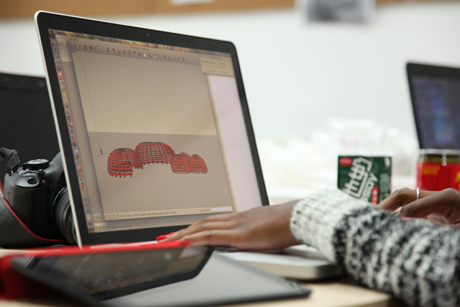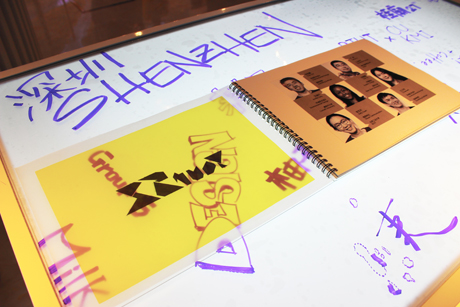Grad student helps Chinese city foster an identity
By Natalie O’Toole



More than 10 million people have flocked to the Chinese city of Shenzhen in the past three decades due to its status as the country’s first Special Economic Zone. This has led to a dynamic, modern city, but some believe such rapid growth has also compromised cultural identity. While attending a design camp in the city in November, graduate student Arielle Levy worked with local students to create a design competition for the city’s youth to help brand “their” Shenzhen.
“The fishermen’s village it once was is unrecognizable,” said Levy, who holds a 2013 bachelor’s degree in design and environmental analysis from Cornell. “We gravitated towards Shenzhen's lack of a recognizable identity. Modern Shenzhen doesn't read as a city with a particular character, much less a trace of a past character.”
Levy, who studies in the fields of design history, theory and criticism, was the only American of 11 international students and more than 60 Chinese students invited to the design camp. The 10-day event, which featured lectures, conferences, seminars, workshops, field trips and discussions, intended to encourage “multicultural and experimental design from abroad and local university students.”
Students were split into 11 groups and tasked with designing a product or service based on Shenzhen. Levy said her group proposed a design competition and festival called YourSZ (Your Shenzhen) to address the city’s absent identity.
“We came to the conclusion that the best way for the city to really shape an identity was to empower the young designers to show the city what they believe is their Shenzhen,” Levy said. “The competition YourSZ was our solution to home in on Shenzhen's identity through their youth.”
Levy said the city’s “young and fresh feeling” inspired her in helping to create the competition. She described one captivating place in particular, a small, artistic neighborhood filled with cafés, bookstores, lounges and bars. “There was a mix of people – Asian, European, etc. – all seemingly exchanging ideas and inspirations. Every little store and café had its own character,” she said. “I was so inspired by the graffiti and sculptures that were littered around the area. Sides of buildings were covered in the most beautiful images.”
Working with Chinese students was eye-opening and challenging, Levy said. “It was interesting to work in a group with two very different design processes and operate in a sort of give-and-take manner.” The language barrier presented a special difficulty. Levy said her roommate spoke no English, so they communicated through their phones. “She had an app that she would speak into, and it would voice her words to me in English,” she said.
As she completes her thesis on museum archetypes, Levy said the Shenzhen design camp gave her a more international perspective on design.“My trip really increased my global consciousness,” she said. “In my studies, I am making it a point to research museums from all over the world.”
Kathleen Gibson, associate professor in the Department of Design and Environmental Analysis in the College of Human Ecology, accompanied Levy and gave a talk on the Intypes Research and Teaching Project, a typology of contemporary interior design practices.
Natalie O’Toole ’16 is a writer intern for the Cornell Chronicle.
Media Contact
Get Cornell news delivered right to your inbox.
Subscribe